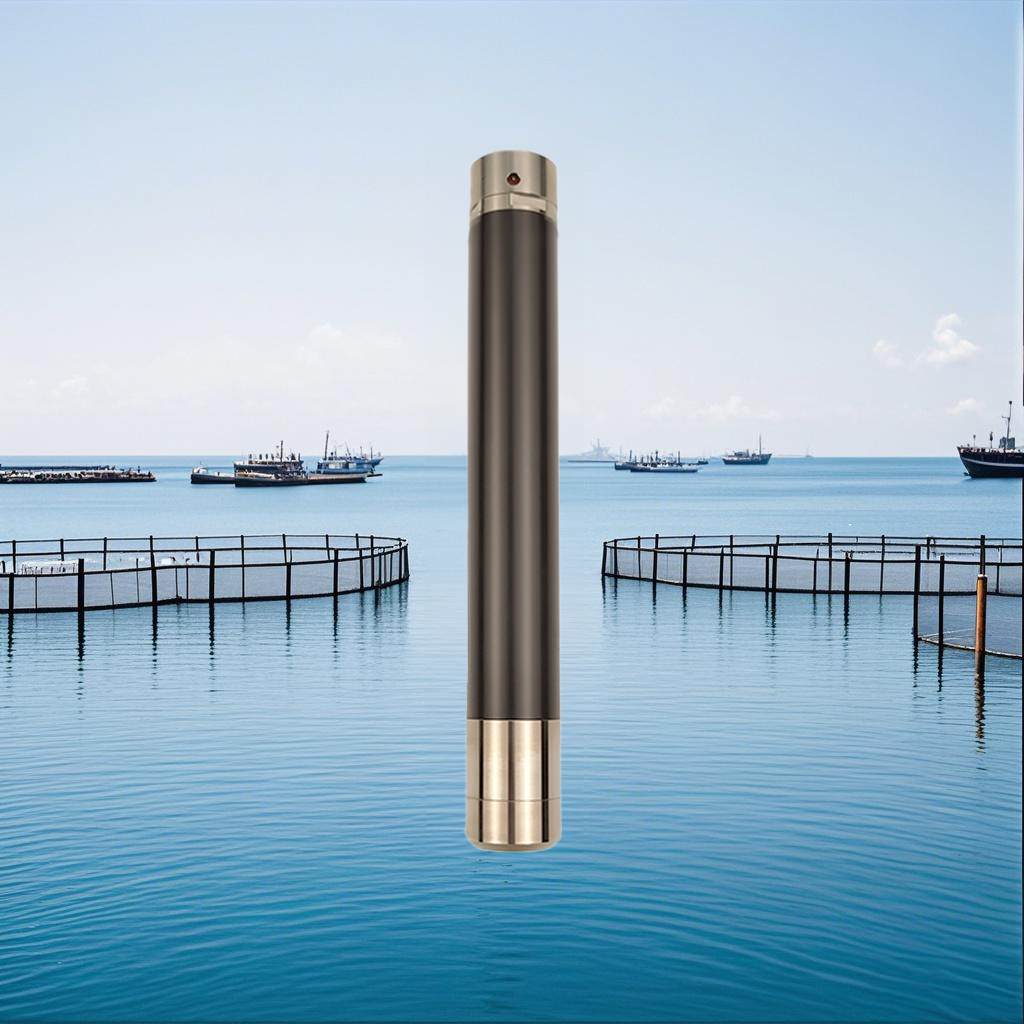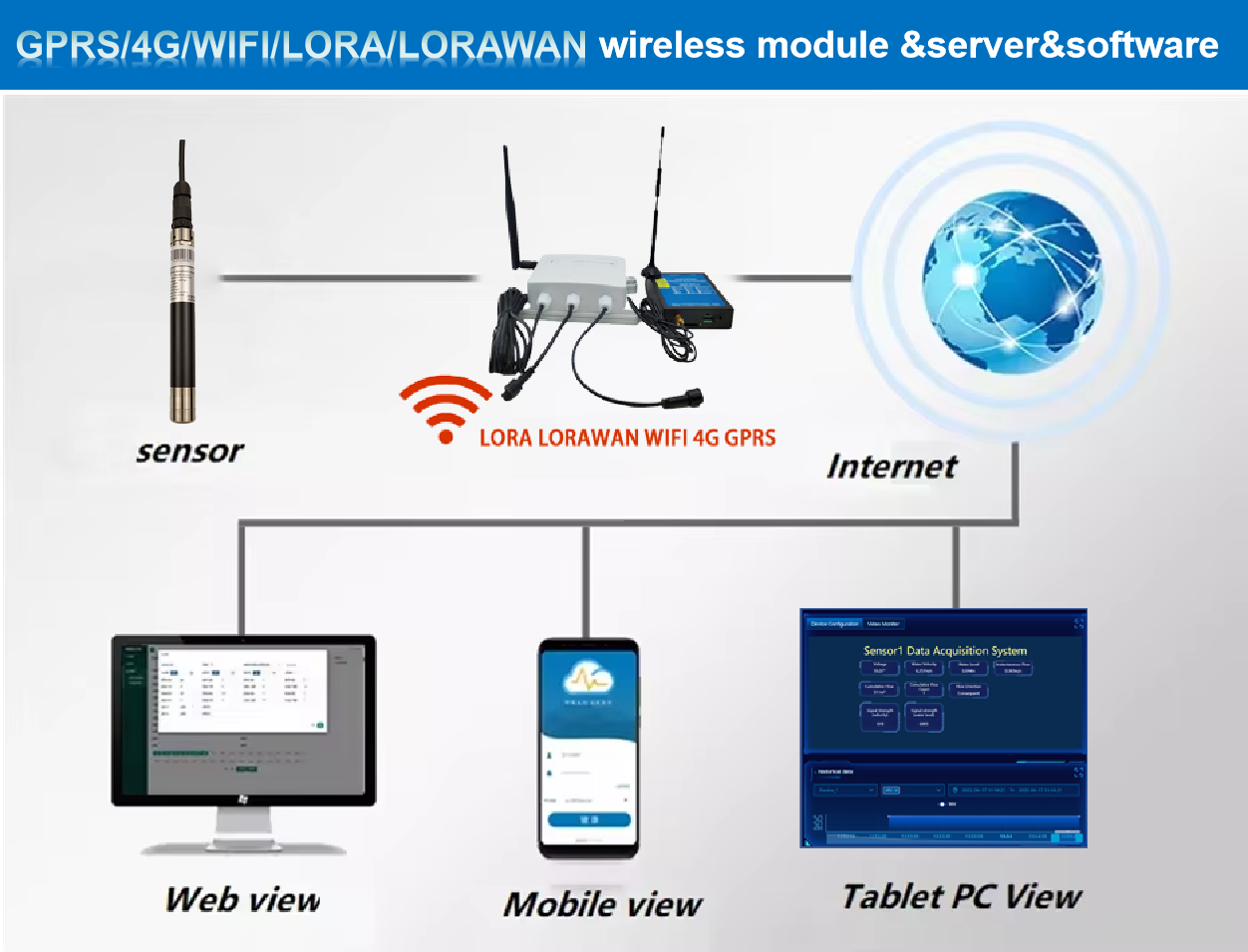Met die vinnige ontwikkeling van globale akwakultuur en die toenemende omgewingsmoniteringsvereistes, word titaniumlegering-opgeloste suurstofsensors kerntoestelle op die gebied van watergehaltemonitering, danksy hul hoë presisie, korrosiebestandheid en lae onderhoudsvoordele. Onlangs was daar 'n toename in die vraag na opgeloste suurstofsensors in akwakultuurkragstasies soos Suidoos-Asië en Suid-Amerika. Die optiese opgeloste suurstofsensors van titaniumlegering het die mark se nuwe gunsteling geword as gevolg van hul langtermynstabiliteit en aanpasbaarheid by strawwe omgewings.
Tegniese voordele van titaniumlegering opgeloste suurstofsensors
Tradisionele opgeloste suurstofsensors gebruik tipies polarografiese metodes of membraanelektrodetegnologie, wat gereelde membraan- en elektrolietvervangings vereis, wat lei tot hoë onderhoudskoste. In teenstelling hiermee gebruik die nuwe generasie titaniumlegering-fluoresensie-opgeloste suurstofsensors die beginsel van fluoresensieblus en spog met die volgende baanbrekende voordele:
Geen-membraan ontwerp, onderhoudsvry
Tradisionele sensors vereis periodieke membraanvervanging en elektrolietaanvulling. In teenstelling hiermee benodig fluoresensie-gebaseerde sensors slegs 'n fluoresserende doppie, met 'n lewensduur van 1-2 jaar, wat onderhoudskoste aansienlik verminder. Daarbenewens beskik die sensor se sonde oor soortgelyke tegnologie, geskik vir seewater-akwakultuur, en benodig geen kalibrasie nie, wat dit gereed maak vir gebruik direk uit die boks.
Sterk korrosieweerstand, geskik vir strawwe watertoestande
Die titaniumlegeringshuls kan seewater met 'n hoë soutgehalte, industriële afvalwater en sterk suur- of alkaliese omgewings weerstaan, wat algemene korrosieprobleme wat in tradisionele vlekvrye staal- of plastiekomhulsels voorkom, vermy. Hierdie kenmerk maak wydverspreide toepassing in verskeie industrieë moontlik.
IoT-integrasie en afstandmonitering
Titaniumlegering-opgeloste suurstofsensors ondersteun RS485/MODBUS-protokolle, wat maklike integrasie met PLC's of wolkplatforms vir afstandmonitering via mobiele toepassings moontlik maak, wat intydse watergehaltemonitering vir gebruikers aansienlik vergemaklik.
Belangrike Toepassingscenario's
1. Akwakultuur: Verbetering van suurstofdoeltreffendheid en vermindering van mortaliteitsyfers
In Suidoos-Asiatiese lande soos Viëtnam en Thailand, neem garnaleboerderybedrywe vinnig opgeloste suurstofsensors in samewerking met nanoborrel-oksigeneringstegnologieë (bv. Viëtnam se VENTEK-toerusting) aan. Hierdie kombinasie het gelei tot 'n toename van meer as 10% in garnale se gewigstoename. Onlangse navorsing deur 'n Dalian-span het bevind dat 'n hoë-suurstofomgewing met nanoborrels (15.95 mg/L) die gewigstoenamekoers van Japannese garnale met 104% kan verhoog en patogene bakterieë in water met 62% kan verminder.
2. Rioolbehandeling: Optimalisering van belugting, energiebesparing en verbruiksvermindering
Deur die presiese monitering van opgeloste suurstofvlakke in rioolvuil, kan titaniumlegeringssensors help om die belugtingsproses in afvalwaterbehandeling te optimaliseer, wat energiebesparing en verminderde verbruik bewerkstellig.
3. Industriële Proseswaterbeheer
In die voedsel-, drank- en farmaseutiese nywerhede is stabiele watergehaltemonitering noodsaaklik. Die korrosiebestandheid van titaniumlegeringssensors maak hulle ideaal vir langtermynmonitering, wat verseker dat watergehalte aan produksiestandaarde voldoen.
Marktendense en Toekomsvooruitsigte
Groeiende vraag in Suidoos-Asië
As gevolg van die sterk groei van akwakultuur in Viëtnam, Thailand en ander lande, ervaar die mark vir opgeloste suurstofsensors vinnige groei, met verwagtinge dat die globale markgrootte teen 2025 meer as $500 miljoen sal oorskry.
Intelligente Opgraderings
Met KI-algoritmes sal toekomstige sensors voorspellende suurstoftoediening moontlik maak. Slim kweekhuisprojekte in Nederland het byvoorbeeld reeds die groei van hidroponiese gewasse geoptimaliseer, wat die enorme potensiaal van slim monitering en watergehaltebestuur demonstreer.
Gevolgtrekking
Sensors vir opgeloste suurstof in titaniumlegerings word kerntoestelle in akwakultuur, rioolbehandeling en ander velde, danksy hul duursaamheid, akkuraatheid en lae onderhoud. Namate IoT- en nanoborrel-oksigeneringstegnologie voortgaan om te vorder, sal hul markpotensiaal verder uitbrei, wat nuwe geleenthede en uitdagings vir watergehaltebestuur bied.
Bykomende oplossings aangebied deur Honde Technology Co., LTD.
Ons kan ook 'n verskeidenheid oplossings bied vir:
- Handmeters vir waterkwaliteit met verskeie parameters
- Drywende boeistelsels vir waterkwaliteit met verskeie parameters
- Outomatiese skoonmaakborsels vir multiparameter watersensors
- Volledige stelle bedieners en sagteware draadlose modules, wat RS485 GPRS/4G/WIFI/LORA/LORAWAN ondersteun
Vir meer inligting oor watergehaltesensors, kontak asseblief Honde Technology Co., LTD.
- E-pos:info@hondetech.com
- Maatskappy webwerf:www.hondetechco.com
- Tel: +86-15210548582
Plasingstyd: 21 Mei 2025



